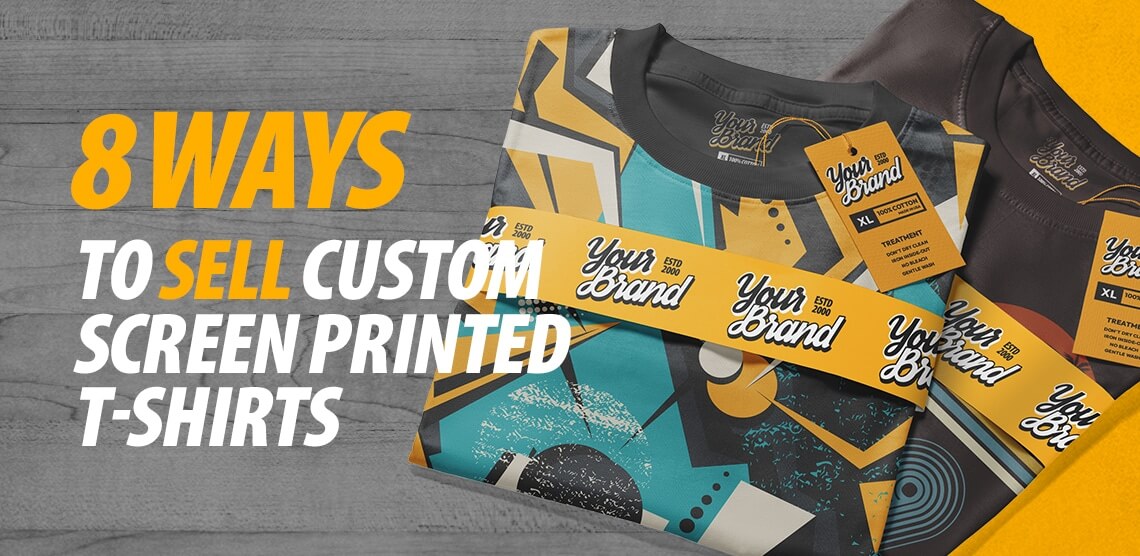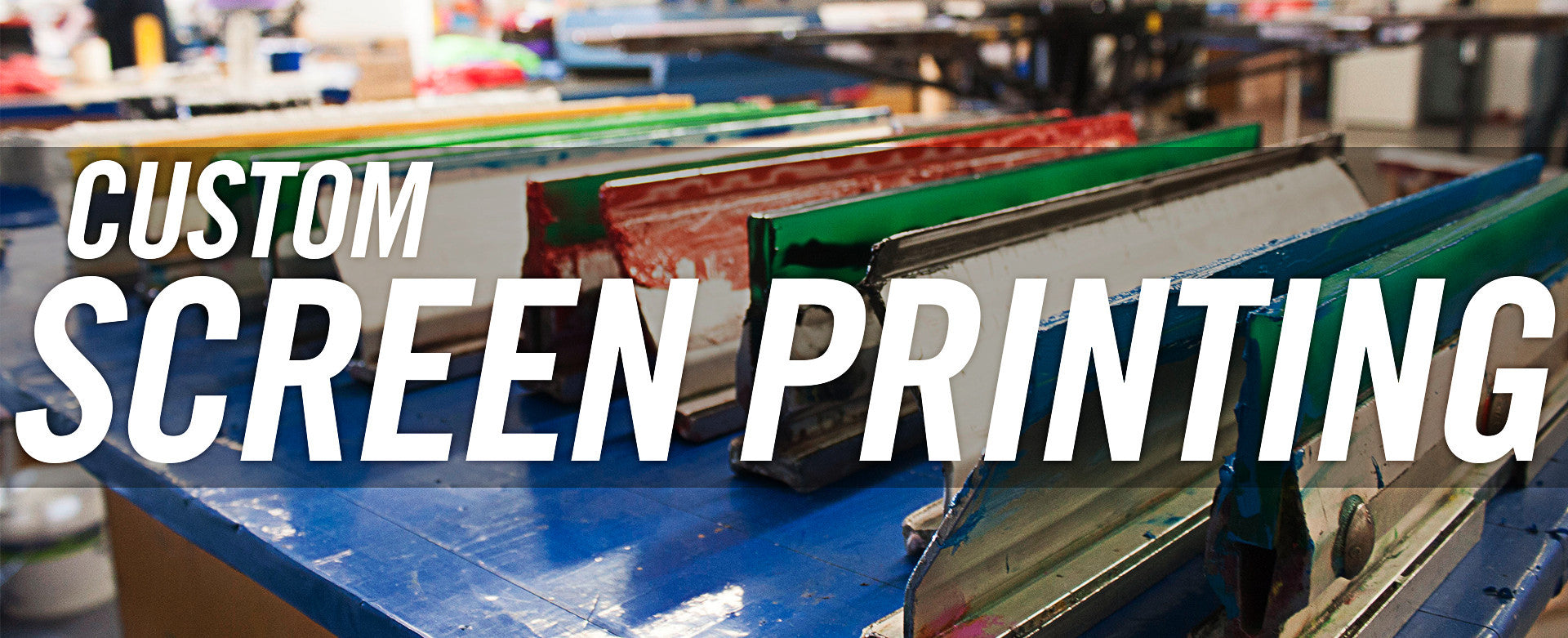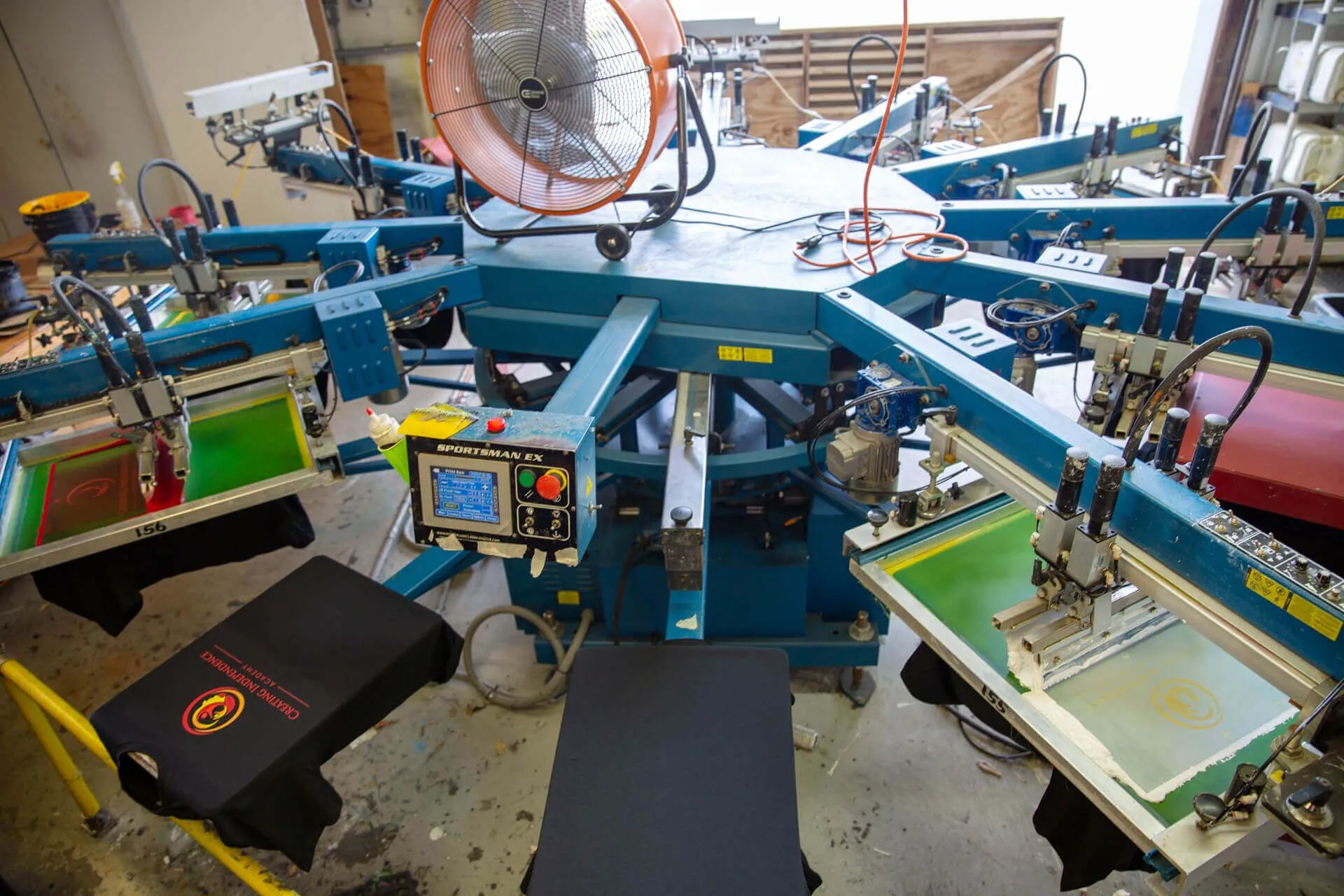Beginner-Friendly Screen Printing Kit for DIY Projects
Wiki Article
Screen Printing Uncovered: Whatever You Need to Learn About Tee and Garment Printing Methods
Screen printing is an interesting method that combines art with strategy, supplying countless opportunities for imagination. All set to explore the necessary aspects that make display publishing an art kind?
The Essentials of Screen Printing: Exactly How It Functions
When you dive right into screen printing, you'll find it's both an art and a scientific research. At its core, display printing involves creating a pattern, or display, that enables ink to pass with only in certain areas.Setting the display over the fabric, then utilize a squeegee to press ink with the display onto the garment. Each action is necessary, and grasping them will certainly elevate your screen printing abilities, transforming basic garments into one-of-a-kind, meaningful pieces.
Kinds of Screen Printing Techniques
As soon as you grasp the essentials of screen printing, it's time to explore the different methods that can elevate your designs. One preferred technique is traditional display printing, where ink is pressed with a stenciled screen. This method is excellent for strong, vivid shades. There's water-based ink printing, which provides a softer feel and is eco-friendly, but it needs a different method to treating.One more alternative is plastisol printing, recognized for its toughness and vibrant shades, making it a favorite for many brands. Experiment with halftone printing to create gradient impacts and detailed styles.
Necessary Devices for Display Printing
To accomplish stunning results in display printing, having the best tools is basic. You'll need a strong display printing structure, which holds the mesh that moves your layout onto the garment. Next, purchase top quality squeegees; these are important for applying ink equally across the display. You'll also need a great direct exposure device to create your screens, along with a washout booth for cleaning them after use. A trusted warmth source, like a conveyor clothes dryer or warmth press, is important for curing your prints to assure long life. Do not forget a correct work area, outfitted with tables and storage for your products. Protective equipment, such as handwear covers and masks, will certainly maintain you risk-free from chemicals and inks. With the right tools, you'll be well on your way to creating professional-quality prints.Selecting the Right Inks and Products
When selecting inks and materials for screen printing, you require to take into consideration the kind of ink that works ideal for your task. Believe about textile compatibility to ensure your designs look last and fantastic long. Likewise, discover environmentally friendly ink choices to make your printing process extra sustainable.Sorts Of Display Inks
Selecting the appropriate screen ink is necessary for attaining vibrant, long lasting prints that meet your project's needs. There are a number of kinds of screen inks to check out. Specialty inks, such as glow-in-the-dark or metal, can add distinct impacts to your designs.
Textile Compatibility Factors To Consider
Recognizing material compatibility is crucial for accomplishing high-grade display prints, specifically considering that various materials respond uniquely to various inks. Constantly test your inks on example material to assure they stick correctly and preserve color honesty. Furthermore, maintain in mind that textile weight and structure can influence the last result, so choosing the best ink and material combo is vital for your task's success.Eco-Friendly Ink Options
Eco-friendly inks are coming to be a popular option for screen printers that wish to minimize their environmental influence while maintaining high quality. When picking inks, take into consideration water-based inks, which are much less damaging and less complicated to clean up compared to conventional solvents. These inks bond well with fabrics, supplying lively results without harmful chemicals. You might additionally discover eco-solvent inks that make use of fewer unstable organic substances (VOCs), making them a much safer choice for both your health and the world.Additionally, look for inks made from renewable energies, such as soy or vegetable-based alternatives. By choosing the appropriate inks and materials, you'll not just create sensational layouts yet also add to a much more lasting printing process. Make the switch, and your prints will mirror your dedication to the atmosphere!
Preparing Your Design for Display Printing

File Style Needs
To assure your style looks vivid and sharp on textile, you'll require to pay close attention to submit layout requirements for display printing. Make sure your layout has a transparent background to stop unwanted white sides on your prints. Maintain shade modes in mind; CMYK is common for display printing, so convert your RGB makes as necessary.Shade Separation Methods
Color separation is a vital step in preparing your layout for display printing, and mastering it can significantly improve your print high quality. You'll require to break your layout into individual colors, as each shade needs a different display throughout printing. Beginning by determining all the colors in your style and produce layers each. You can utilize software application like Adobe Photoshop or Illustrator to isolate and different colors efficiently. Be particular to save each layer as a separate file, usually in a style like TIFF or PSD. This precision not just ensures precise shade depiction yet also simplifies the printing procedure. By paying interest to t-shirt printing color splitting up, you'll achieve lively and expert lead to your screen-printed garments.Resolution and Dimension
Achieving the ideal lead to display printing begins with guaranteeing your layout has the best resolution and size. Ideally, your artwork needs to be at least 300 DPI (dots per inch) for sharp, clear prints. If you make use of lower resolution, your end product could look pixelated and less than professional.When it comes to size, think about the measurements of your print location. Design your artwork to match the last print dimension, ideally creating it in the actual measurements you'll be publishing. By doing this, you'll avoid any type of unanticipated scaling issues.
Always examine your design in both vector and raster layouts. Vector graphics can be scaled without losing top quality, making them suitable for screen printing. Preparing properly will assure your layout looks outstanding on every garment!
Step-by-Step Screen Printing Process
Screen printing is a vibrant procedure that permits you to produce vivid styles on numerous surface areas. To get started, you'll need a display, emulsion, and your picked ink.Put ink onto the display and use a squeegee to push the ink via the stencil onto the material. Raise the screen thoroughly and allow the print dry. You have actually effectively screen published your design.
Tips for Effective Screen Printing Projects
While you're diving into your display printing tasks, bear in mind that preparation is essential to success. Start by collecting all your products-- inks, garments, screens, and squeegees. A tidy work space assists prevent unwanted errors, so clean before you begin.Next, validate your artwork is high-resolution and appropriately sized for your garment. Evaluate your display for proper exposure and tidy it extensively to prevent spots. When mixing your inks, comply with the manufacturer's guidelines to attain the best uniformity.
During printing, use even pressure with your squeegee for regular results. Don't hurry; take your time to validate each print meets your requirements. After printing, allow your garments dry totally prior to handling or packaging them.
Finally, always maintain a sample of your benefit future referral. In this manner, you can assess your development and enhance your strategies over time. Pleased printing!

Regularly Asked Inquiries
Just how Lengthy Does It Require To Establish up a Screen Printing Job?
Establishing a screen printing work generally takes about half an hour to an hour. You'll prepare the screens, mix inks, and adjust the press. The moment differs based upon complexity and experience, so stay organized!Can I Publish on Various Textile Types Making Use Of the Very Same Strategy?
Yes, you can publish on various textile kinds utilizing the very same strategy, yet you'll need to adjust your inks and setups. Some fabrics take in ink in a different way, so trying out guarantees the most effective outcomes for each product.What Prevail Blunders to Stay Clear Of in Display Printing?
When display printing, avoid typical blunders like using the wrong ink, overlooking proper direct exposure times, or avoiding pre-press checks. Always check your arrangement and keep tidy screens to guarantee high quality results each time.Just How Can I Appropriately Tidy and Keep My Display Printing Equipment?
To appropriately clean and maintain your screen printing tools, you need to consistently wash displays with proper solvents, check mops for wear, and ensure all devices are kept dust-free and completely dry. Consistency protects against pricey repairs and boosts performance.Is Display Printing Eco-friendly Compared to Various Other Methods?
Display printing can be extra eco-friendly than various other methods, specifically if you utilize eco-conscious materials and water-based inks. By picking sustainable supplies and practices, you decrease waste and lessen your effect on the planet.Display Printing Uncovered: Whatever You Need to Know About T-Shirt and Garment Printing Strategies
At its core, display printing involves creating a stencil, or screen, that enables ink to pass through only in certain areas. Placement the screen over the textile, then make use of a squeegee to push ink via the screen onto the garment. One preferred technique is conventional screen printing, where ink is pushed through a stenciled display.When picking inks and materials for screen printing, you require to take right into account the type of ink that works best for your project.
Report this wiki page